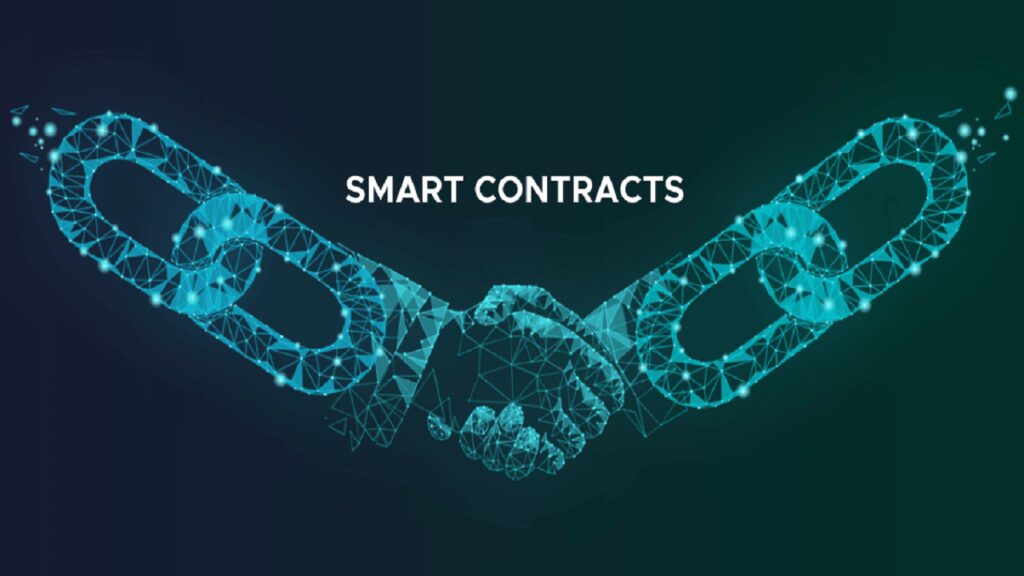- In 1998, Nick Szabo, an American computer scientist, coined the term smart contract as he invented the first cryptocurrency, Bit Gold.
- Smart contracts follow a simple “if/else/ when and then” concept written in code. Each block consecutively runs this kind of code and thus generates a repetitive loop that is seemingly automated.
- Today smart contracts contain two main entities the contract creator and the recipient.
We have all heard about cryptocurrency, Web 3 revolutions and the endless possibilities besowed on blockchain developers. Blockchain technology has proven its versatile and flexible nature time and time again. It has brought in decentralized applications which are slowly dominating the digital world. Indeed this new invention has its place in the 4th Industrial revolution. However, do you truly understand how blockchain works? What makes it so unique? The answer to that question is the smart contract. We are diving into a 3 part series, each expanded version of the other on the applications of smart contracts, what it is and why it’s unique.
This is to aid further anyone interested in finding out what makes a blockchain tick. In addition, we hope it may inspire more blockchain developers in Africa’s ecosystem.
How blockchain works; the history
The term cryptocurrency took the entire digital world by storm in 2017, 8 years after its initial debut in 2009. Since then, the Web 3 bandwagon began its first stroll, and blockchain technology soon became the net new thing. However, most people need to learn that Bitcoin was never the first cryptocurrency, and the term smart contracts debuted long before its creation.
Also, Read Ethereum mining, a beginner’s guide to getting started.
In 1998, Nick Szabo, an American computer scientist, coined the term smart contract as he invented the first cryptocurrency, Bit Gold. At the time, the concept of blockchain technology was unheard of even though its application already existed. A fun fact is that many suspect that Szabo later resurfaced as the alias Satoshi Nakamoto, but he eventually denied this claim. In his original work, Szabo defined smart contracts as computerized transaction protocols that execute the terms of a contract.
Smart contracts are not AI
The computer scientist used the term smart simply because it could automatically execute specific pre-programmed steps. At the time, many individuals thought that the term smart contract correlated with using AI within his program. Still, he later stated that as much as the initial application automated the contracts, their capabilities ceased there, making them unfit to be termed AI.

Fundamentally all applications of smart contracts, even in decentralized applications, follow this basic rule.
Szabo wrote:
“These new securities are formed by combining securities (such as bonds) and derivatives (options and futures) in a wide variety of ways. Due to computerized analysis of these complex term structures for payments can now be built into standardized contracts and traded with low transaction costs.”
After years, blockchain developers redefined this concept to develop systems and algorithms that would later be the building blocks of “how blockchain works”.
Today smart contracts contain two main entities: the contract creator, who defines and sets the necessary contract rule through code, and the recipient, who has fulfilled all the rules to acquire some response. This mutual understanding between both parties led to the numerous applications of smart contracts.
Also, Read the Software, packages and tools you need to become a web3 developer.
How blockchain works; smart contracts
At the most basic in understanding “how blockchain works”, smart contracts follow a simple “if/else/ when and then” concept written in code. Each block consecutively runs this kind of code and thus generates a repetitive loop that is seemingly automated. Smart contracts contain predetermined conditions that, if met, result in reactions. In layman’s language, they actualize the concept; “every action results in a reaction”. This would allow parties to conduct transactions with only knowing the common interest of the transaction.
Basic view
To understand how blockchain works, decentralized applications follow these steps:

- Blockchain developers design and setup predefined conditions for transactions and validation
- A party would trigger the smart contract by initiating a want or a need. A prime example is a user’s desire to send cryptocurrency to another party.
- This triggers the validation and verification process. This process is the actual application of smart contracts, as the decentralized application will go through the predefined rules set up by the blockchain developers. It’s similar to how banks verify the account details and ID information before transferring funds. However, smart contracts do not need excess information.
- The decentralized application creates a new block. A core application of smart contracts is the creation of a record. This record is vital as it is a core element of “how blockchain works”. The data is distributed throughout the distributed network and is a fundamental rule applied universally by blockchain developers.
- It merges old and new information in the blockchain network. The last step in most smart contracts is the updation of the network system. Its universal application ensures that no single node in the network has different data. This creates the transparent nature of smart contracts.
The different components of a smart contract include the logic, properties and data in a single package. This collapses the business and data logic layers into a single layer in which the developer writes in blockchain. This answers a few of the fundamental aspects of “how blockchain works”; its immutability, deterministic execution and transparency required in untrusted environments. These attributes vary depending on the decentralized applications.
Also, Read Blockchain technology; The basis of Kenyan applications.
Some blockchain developers separate these functionalities to isolate and use them in different applications of smart contracts.
The replication, as earlier mentioned, ensures that all untrusted parties or networks have the same information. Each node within the decentralized application network will require to execute the smart contract over and over.
Conclusion
Blockchain developers often reinvent the terms of the basic rules applied in the blockchain. This leads to different applications of smart contracts. At the same time, some may utilize immutability and transparency others focus on the distribution of smart contracts. It is essential to remember that this article does not focus on its application to cryptocurrency.
Blockchain developers have proven there are numerous designs of decentralized applications. This was merely an introductory article touching on the basic concept of smart contracts and elaborating on the fundamental aspect. For our more technical audience, we will issue an article highlighting smart contracts’ intricate nature. In addition, we will elaborate on the different programming languages used.
